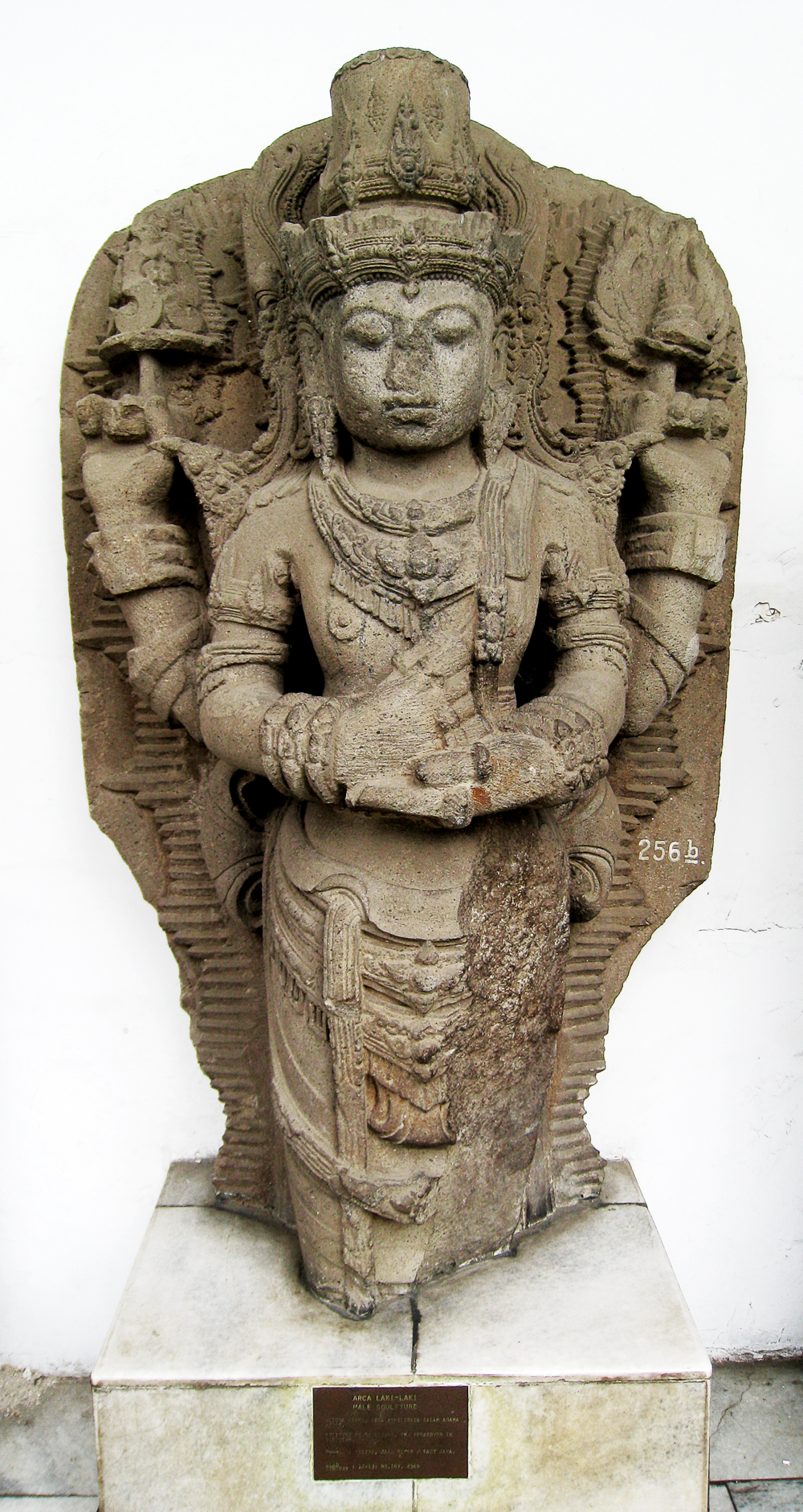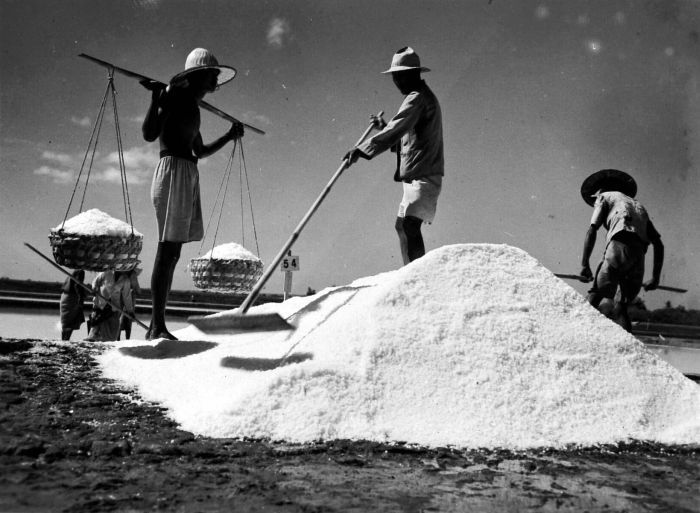|
Jayakatwang
Jayakatwang (died 1293) was the king of short lived second Kingdom of Kediri (also known as Gelang-gelang Kingdom) of Java, after his overthrow of Kertanegara, the last king of Singhasari. He was eventually defeated by Raden Wijaya, Kertanegara's son-in-law using the troops of the Mongol Yuan dynasty that were invading Java. Raden Wijaya would later turn against the Mongols and found Majapahit, a great empire centered around in Java. Background Since 1271, Jayakatwang was viceroy (or governor) of Kediri, a vassal state of Singhasari. Kediri was formerly the dominant kingdom in Java until overthrown in 1222 by Ken Arok, the first king of Singhasari. Jayakatwang was probably a descendant of the Kediri royal line, and thus held ambition to restore his line to power and rulership of Java. His name is derived from Sanskrit '' Jaya'' (''victory'') and Javanese ''ketawang'', (''rising, or appearing''). Kediri is located in fertile rice-producing area in Brantas River banks, appr ... [...More Info...] [...Related Items...] OR: [Wikipedia] [Google] [Baidu] |
Mongol Invasion Of Java
The Yuan dynasty under Kublai Khan attempted in 1292 to invade Java, an island in modern Indonesia, with 20,000 to 30,000 soldiers. This was intended as a punitive expedition against Kertanegara of Singhasari, who had refused to pay tribute to the Yuan and maimed one of their emissaries. However, in the intervening years between Kertanegara's refusal and the expedition's arrival on Java, Kertanegara had been killed and Singhasari had been usurped by Kediri. Thus, the Yuan expeditionary force was directed to obtain the submission of its successor state, Kediri, instead. After a fierce campaign, Kediri surrendered, but the Yuan forces were betrayed by their erstwhile ally, Majapahit, under Raden Wijaya. In the end, the invasion ended with Yuan failure and victory for the new state, Majapahit. Background Kublai Khan, the founder of the Yuan dynasty, had sent envoys to many states demanding that they pay tributes and submit themselves to the Mongol empire (Yuan dynasty). Men-s ... [...More Info...] [...Related Items...] OR: [Wikipedia] [Google] [Baidu] |
Kediri Kingdom
Kediri Kingdom (also known as Panjalu) Javanese script : ꧋ꦥŋꦗꦭꦸ, was a ''Hindu-Buddhist'' Javanese Kingdom based in East Java from 1042 to around 1222. This kingdom is centered in the ancient city ''Dahanapura'', despite the lack of archaeological remains, the age of Kediri saw much development in classical literature. Mpu Sedah's '' Kakawin Bharatayuddha'', Mpu Panuluh's ''Gatotkacasraya'', and Mpu Dharmaja's '' Smaradhana'' blossomed in this era. The kingdom's capital is believed to have been established in the western part of the Brantas River valley, somewhere near modern Kediri city and surrounding Kediri Regency. Etymology and names Actually, the city of Daha existed before the division of the kingdom. Daha is an abbreviation of ''Dahanapura'', which means ''city of fire''. This name is listed in the Pamwatan inscription issued by Airlangga in 1042. This is in accordance with the news in '' Serat Calon Arang'', that at the end of Airlangga's reign, the cen ... [...More Info...] [...Related Items...] OR: [Wikipedia] [Google] [Baidu] |
Kingdom Of Kediri
Kediri Kingdom (also known as Panjalu) Javanese script : ꧋ꦥŋꦗꦭꦸ, was a ''Hindu-Buddhist'' Javanese Kingdom based in East Java from 1042 to around 1222. This kingdom is centered in the ancient city ''Dahanapura'', despite the lack of archaeological remains, the age of Kediri saw much development in classical literature. Mpu Sedah's '' Kakawin Bharatayuddha'', Mpu Panuluh's ''Gatotkacasraya'', and Mpu Dharmaja's '' Smaradhana'' blossomed in this era. The kingdom's capital is believed to have been established in the western part of the Brantas River valley, somewhere near modern Kediri city and surrounding Kediri Regency. Etymology and names Actually, the city of Daha existed before the division of the kingdom. Daha is an abbreviation of ''Dahanapura'', which means ''city of fire''. This name is listed in the Pamwatan inscription issued by Airlangga in 1042. This is in accordance with the news in '' Serat Calon Arang'', that at the end of Airlangga's reign, the cen ... [...More Info...] [...Related Items...] OR: [Wikipedia] [Google] [Baidu] |
Singhasari
Singhasari ( jv, ꦏꦫꦠꦺꦴꦤ꧀ꦱꦶꦔ꧀ꦲꦱꦫꦶ, translit=Karaton Singhasari or , id, Kerajaan Singasari) was a Javanese Hindu kingdom located in east Java between 1222 and 1292. The kingdom succeeded the Kingdom of Kediri as the dominant kingdom in eastern Java. The kingdom's name is cognate to Singosari district of Malang Regency, located several kilometres north of Malang city. Etymology Singhasari (alternate spelling: ''Singosari'') was mentioned in several Javanese manuscripts, including Pararaton. According to tradition, the name was given by Ken Arok during the foundation of the new kingdom to replace its old name, Tumapel, located in a fertile highland valley which today corresponds to the area in and around Malang city. It derives from Sanskrit word ''singha'' which means "lion" and ''sari'' which in Old Javanese could mean either "essence" or "to sleep". Thus Singhasari could be translated as "essence of lion" or "sleeping lion". Although the lion ... [...More Info...] [...Related Items...] OR: [Wikipedia] [Google] [Baidu] |
Kertanegara
Sri Maharajadiraja Sri Kertanegara Wikrama Dharmatunggadewa, Kritanagara, or Sivabuddha (died 1292), was the last and most important ruler of the Singhasari kingdom of Java, reigning from 1268 to 1292. Under his rule Javanese trade and power developed considerably, reaching the far corners of the Indonesian archipelago. Background Kertanegara was the fifth ruler of Singasari and was the son of the previous king, Wisnuwardhana (r. 1248–1268). He effectively held power from 1254 and officially succeeded his father when the latter died in 1268. The Singasari dynasty had come to power in Java following the overthrow of the previous Kediri Kingdom by Ken Arok, the first Singhasari ruler in 1222. Kertanegara was a follower of a mystical Tantric syncretism of Hinduism and Buddhism, and presented himself as the divine god-king incarnation of Shiva and Buddha. Kertanegara celebrated many religious festivals and commissioned sculptures and metal plaques during his reign. Conquests S ... [...More Info...] [...Related Items...] OR: [Wikipedia] [Google] [Baidu] |
Majapahit
Majapahit ( jv, ꦩꦗꦥꦲꦶꦠ꧀; ), also known as Wilwatikta ( jv, ꦮꦶꦭ꧀ꦮꦠꦶꦏ꧀ꦠ; ), was a Javanese Hindu-Buddhist thalassocratic empire in Southeast Asia that was based on the island of Java (in modern-day Indonesia). It existed from 1293 to circa 1527 and reached its peak of glory during the era of Hayam Wuruk, whose reign from 1350 to 1389 was marked by conquests that extended throughout Southeast Asia. His achievement is also credited to his prime minister, Gajah Mada. According to the () written in 1365, Majapahit was an empire of 98 tributaries, stretching from Sumatra to New Guinea; consisting of present-day Indonesia, Singapore, Malaysia, Brunei, southern Thailand, Timor Leste, southwestern Philippines (in particular the Sulu Archipelago) although the scope of Majapahit sphere of influence is still the subject of debate among historians. The nature of Majapahit relations and influences upon its overseas vassals, and also its status as an em ... [...More Info...] [...Related Items...] OR: [Wikipedia] [Google] [Baidu] |
Raden Wijaya
Raden Wijaya or Raden Vijaya (also known as Nararya Sangramawijaya, regnal name Kertarajasa Jayawardhana) (reigned 1293–1309) was a Javanese emperor, and the founder and first monarch of the Majapahit Empire.Slamet Muljana, 2005, ''Runtuhnya Kerajaan Hindu-Jawa dan Timbulnya Negara-negara Islam di Nusantara'', Yogyakarta: LKiS, . The history of his founding of Majapahit was written in several records, including Pararaton and Negarakertagama. His rule was marked by the victory against the army and the Mongol navy of Kublai Khan's Yuan dynasty. Ancestry There are several versions of his ancestry. According to Pararaton, Raden Wijaya was the son of Mahisa Campaka, prince of Singhasari. According to later controversial source from 17th century, Pustaka Rajyarajya i Bhumi Nusantara, Raden Wijaya was the son of Rakeyan Jayadarma (son of Sunda-Galuh King Prabu Guru Darmasiksa) and Dyah Lembu Tal (daughter of Mahisa Campaka from Singhasari). Rakeyan Jayadarma was poisoned and ... [...More Info...] [...Related Items...] OR: [Wikipedia] [Google] [Baidu] |
East Java
East Java ( id, Jawa Timur) is a Provinces of Indonesia, province of Indonesia located in the easternmost hemisphere of Java island. It has a land border only with the province of Central Java to the west; the Java Sea and the Indian Ocean border its northern and southern coasts, respectively, while the narrow Bali Strait to the east separates Java from Bali by around . Located in eastern Java (island), Java, the province also includes the island of Madura Island, Madura (which is connected to Java by the longest bridge in Indonesia, the Suramadu Bridge), as well as the Kangean Islands, Kangean islands and other smaller island groups located further east (in the northern Bali Sea) and Masalembu Islands, Masalembu archipelagos in the north. Its capital is Surabaya, the Largest cities in Indonesia, second largest city in Indonesia, a major industrial center and also a major business center. Banyuwangi is the largest regency in East Java and the largest on the island of Java. The p ... [...More Info...] [...Related Items...] OR: [Wikipedia] [Google] [Baidu] |
Pamalayu Expedition
The Pamalayu campaign was a diplomatic and military expeditionary force sent by the Javanese King Kertanegara of Singhasari to conquer the Sumatran Melayu Kingdom. It was decreed in 1275, though perhaps not undertaken until later. Little is known about the results of the expedition. The Padang Roco Inscription dated from 1286 states that a religious statue of Amoghapasa was established at Dharmasraya on the orders of Kertanagara, and that all the inhabitants of Melayu and especially their king, Tribhuwanaraja rejoiced at the presentation of the gifts. The expedition arguably established Javanese domination over Melayu and trade in the Strait of Malacca. To cement the relationship between the two kingdoms, a political marriage was arranged. According to the Pararaton, two Malay princesses, Dara Petak and Dara Jingga, went to Java, originally intended for Kertanegara. However following his demise by Jayakatwang, princess Dara Petak would later be married to Kertanegara's successo ... [...More Info...] [...Related Items...] OR: [Wikipedia] [Google] [Baidu] |
Madura
Madura Island is an Indonesian island off the northeastern coast of Java. The island comprises an area of approximately (administratively 5,379.33 km2 including various smaller islands to the east, southeast and north that are administratively part of Madura's four regencies). Administratively, Madura is part of the province of East Java. It is separated from Java by the narrow Madura Strait. The administered area has a density of 744 people per km2 while main island has a somewhat higher figure of 826 per km2 in 2020. Etymology The name of Madura island is of Hindu origin. The origin of the island's name lies in the legend that the island is in the realm of Hindu deity Baladewa. The name ''Madura'' itself is derived from the word ''"Mathura"'' - a word in Indian-origin language Sanskrit for the native home of Baladewa "Baladeva". The corrupted form of Sanskrit word ''Mathura'' became the ''Madura''.Ed. Emma Helen Blair and James Alexander Robertson, 1903-09The Phili ... [...More Info...] [...Related Items...] OR: [Wikipedia] [Google] [Baidu] |
Arya Wiraraja
Aryan or Arya (, Indo-Iranian *''arya'') is a term originally used as an ethnocultural self-designation by Indo-Iranians in ancient times, in contrast to the nearby outsiders known as 'non-Aryan' (*''an-arya''). In Ancient India, the term ''ā́rya'' was used by the Indo-Aryan speakers of the Vedic period as an endonym (self-designation) and in reference to the geographic region known as ''Āryāvarta'' ('abode of the Aryas'), where the Indo-Aryan culture emerged. In the ''Avesta'' scriptures, ancient Iranian peoples similarly used the term ''airya'' to designate themselves as an ethnic group, and in reference to their mythical homeland, '' Airyanem Waēǰō'' ('stretch of the Aryas'). The root also forms the etymological source of place names such as ''Iran'' (*''Aryānām'') and '' Alania'' (*''Aryāna-''). Although the root ''*arya-'' may be of Proto-Indo-European (PIE) origin, its use as an ethnocultural self-designation is only attested among Indo-Iranian peoples, ... [...More Info...] [...Related Items...] OR: [Wikipedia] [Google] [Baidu] |




.jpg)

